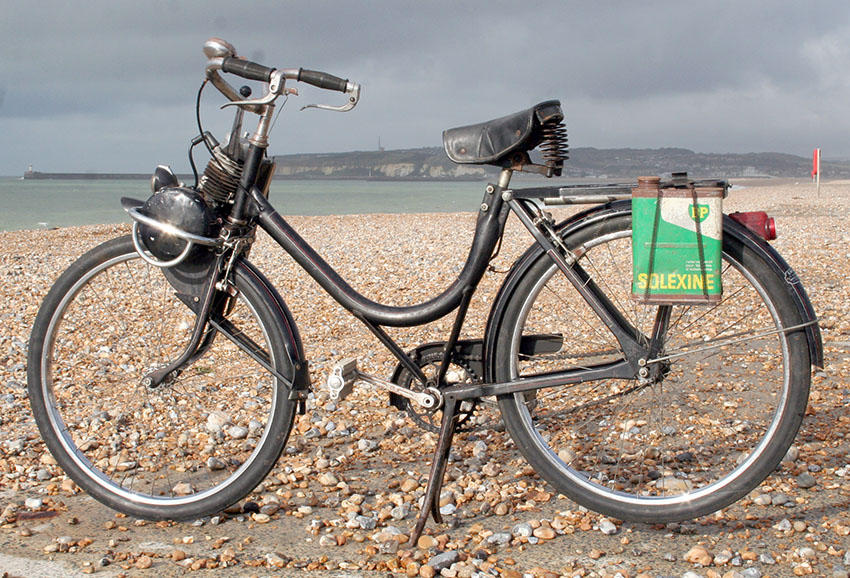

The Velosolex was introduced right after World War 2. Like the Italian Lambrettas and Vespas in the scooter world, the Velosolex set the highest standard in its genre, and remained the market leader for ‘cyclomoteurs’ throughout its production run.
Good marketing was a key strategy. Velosolexes – and particularly the early ones – were not necessarily the best cyclemotors on the market, but the company believed in catching customers while they were still young. Their credo was the same as that of Citroen: ‘A child’s first words must be Mama, Papa and Velosolex.’
The company made Velosolex toys, and the factories had excellent facilities for children on hand when their parents visited the factory.
The Velosolex soon became epitome of French vintage transport.

1955 Velosolex 330
(Original Bill-of-Sale from 26th February 1955)

This Solex 330 is in very good original condition. The paintwork retains most of its pin-striping, and it has a good engine.
It was a gift from my French friend Patrick, who owned it for 11 years, buying it from the original owner. Patrick was once France’s top Solex restorer, refurbishing more than 100 of them over many years, before he got a taste for English cyclemotors.
The 330 was the last model to feature the classic ‘swan-neck’ style, before being modernised the following year with the 660, which had a more angular design. This one has some nice extras, for example an accessory Solxine can and mount, a set of tools onside the tool tray, the original dealer emblem on the rear mudguard, and the original bill-of-sale.
I’ve owned the 330 for six years, but I don’t use it so it’s time for another enthusiast to discover the joys of Velosolex ownership.



THE VELOSOLEX 330

The 330 was introduced at the 1953 Paris Show. The photos below shows Velosolex publicity for the 1954 Tour de France.








ORIGINAL BILL-OF-SALE










1955 VELOSOLEX 330 VIDEO

TO SEE A SHORT VIDEO OF THE VELOSOLEX 330 ENGINE RUNNING
http://youtu.be/pCCSWhHdoiE
PLEASE CLICK HERE













CONTENTS OF TOOLBOX

A toolbox is fitted as standard under the Velosolex carrier rack. The rear of the tool tray is sprung, released by turning the nut.










































